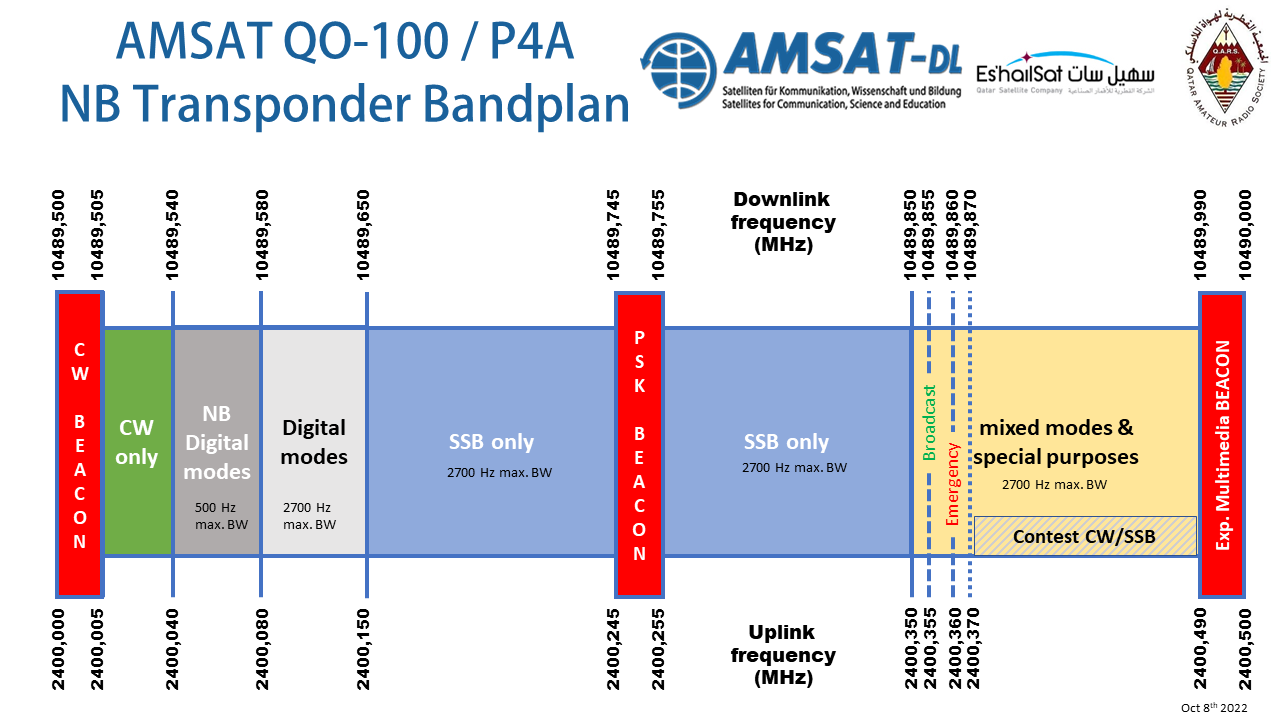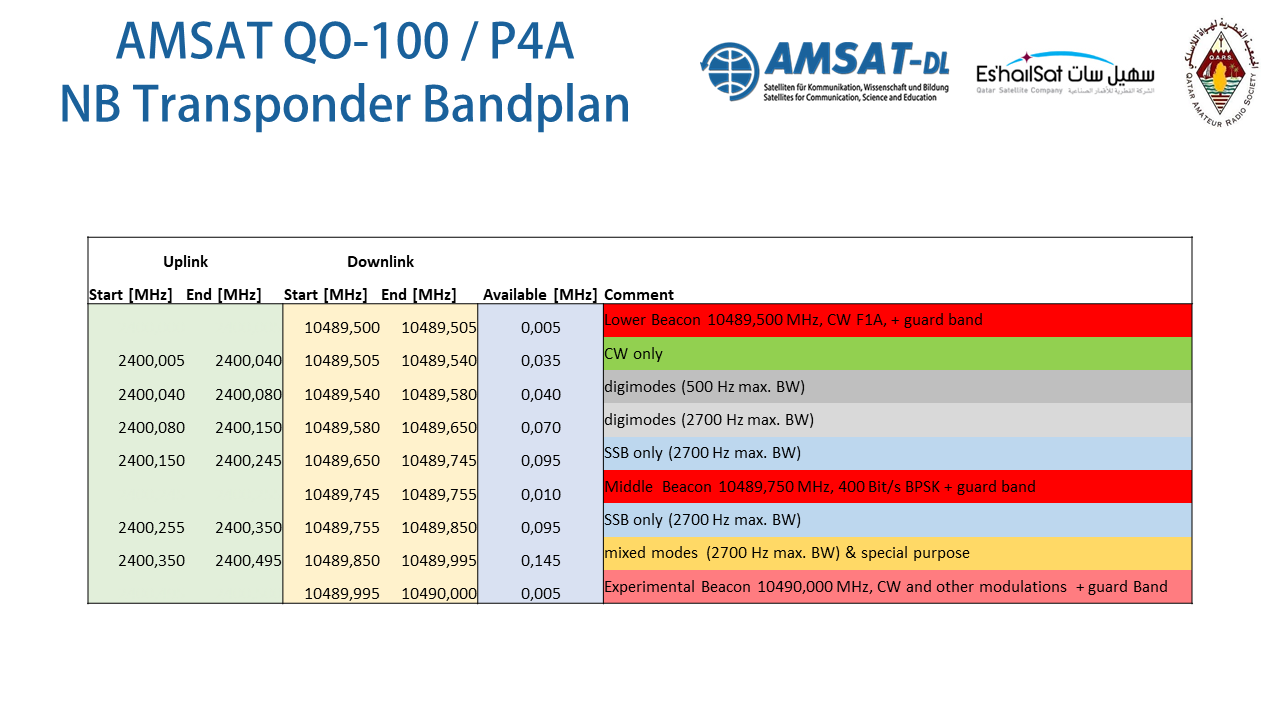
Alargado a banda passsante do QO-100 e…novo pedido à ANACOM!
A banda passante do transponder do QO-100 foi alargado em 14FEV2020, segundo informação do Peter Gulzow, DB2OS, da seguinte forma:
- O novo lower beacon de CW vai estar em 10 489,500 MHz;
- Antes estava em 10 489,550 MHz.
- O novo upper beacon (BPSK, 400 bps) vai estar em 10 490,000 MHz;
- Antes estava em 10 489,800 MHz.
- O novo middle beacon (BPSK, 400 bps) em 10 489,750 MHz;
- Para uso com o SDR-Console ou outros dispositivos.


Assim, para quem não tinha autorização ou que, tendo autorização, queira utilizar todo o transponder NB é necessário solicitar nova autorização à ANACOM.
Note-se que o pedido é apenas para o transponder banda estreita (NB), porque não tenho interesse no transponder Wideband (DATV).
Assim, partilho o pedido que fiz no site da ANACOM, na área reservada ao serviço de amador (área reservada e com login para cada radioamador).
Comece por entrar na sua área reservada no Portal da ANACOM.
Então, escolha a opção assinalada.

Agora comecemos a preencher os dados.
Quaisquer que sejam as datas de inicio e fim, a ANACOM apenas concede autorização por 1 ano, no máximo, devido à legislação.

Texto da autorização especial (para copy/paste)
Implementação de estação do serviço de amador por satélite para teste, em banda estreita, utilizando o transponder linear NB do satélite OSCAR-100 (Orbiting Satellite Carrying Amateur Radio), geoestacionário, também conhecido pela designação Heil’Sat2.
O OSCAR 100 (Heil’sat) encontra-se numa órbita geoestacionária, estando parqueado a 25,9 graus Este.
Possui dois transponders (NB e WB) do serviço de amador por satélite.
Acontece que a banda passante do transponder NB acaba de ser alargada pelo que se torna necessário ampliar a autorização já concedida/solicitada.
Note-se que o último parágrafo só deve ser utilizado por quem já tem autorização.
Nas condições técnicas adicionais, a emissão será “apontada” para cima.
Para calcular o valor da elevação, sugere-se a utilização do site SATLex, que pode ser encontrado aqui.

Texto da autorização especial (para copy/paste)
Assim, pretende-se autorização para efectuar emissão em A1A, A3J ou 2K80J2D, na faixa de 2 400,000 a 2 400,500 MHz, por antena direccional ou parabólica, dirigidas para o mencionado satélite.
A emissão será elevada de 30 graus relativamente ao horizonte, apontando para o azimute verdadeiro de 128 graus Este.
A potência da emissão será inferior a 10W PAR.
A recepção do transponder será realizada na faixa 10 489,500 a 10 490,000 MHz, num dos modos indicados.
Depois escolhe-se o QTH ou indica-se outra localização (no meu caso escolhi a estação fixa principal).

E envia-se…

Agora é só aguardar que a ANACOM responda.
Entretanto, vá ouvindo QSOs no Qatar OSCAR 100 NB WebSDR e aguçando o apetite!… 🙂
73 do Pedro, CT1DBS / CU3HF



















































































